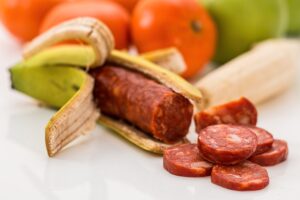There are different types of grains out there, so when it comes to choosing the best grain to eat, it isn’t easy to decide. Hopefully, this write-up will paint a clearer picture of which grain is better to add to your daily diet.
A whole grain is a grain that consists of all of the original components present when it was growing in the field. Refined grains have some parts removed to give them a better texture and a longer shelf life. In contrast, enriched grain replaces most of those nutritional values lost during the refining process. So which grain is the best grain to eat?
These refined grains are more commonly used and find their way into our diets more often. However, recent studies indicate that it may be best to skip refined grains altogether instead of whole-grain alternatives.
Parts of a Grain
Grain begins its life as the seed of a plant. It consists of an edible kernel surrounded by an inedible husk that protects it from the dangers of nature. The kernel itself is made up of three parts:
- The bran is the outer skin of the grain. It contains lots of dietary fiber, B vitamins, protein, and starch.
- The germ is the part of the kernel that is the seed embryo. It is high in vitamins B and E, fat, and protein.
- The remaining part, the endosperm, is the part of the seed that provides energy to the germ. It increases safe storage times but has little else to offer regarding nutrition.
Whole grain
These grains are either present in their whole form or ground into flour while retaining all parts of the seed (bran, germ, and endosperm). Compared with other types of grains, whole grains are better sources of fiber and other vital nutrients, such as B vitamins, iron, folate, selenium, potassium, and magnesium. Whole grains are either single foods, such as brown rice and popcorn, or ingredients in products, such as buckwheat in pancakes or whole-wheat flour in bread.
Refined grain
Refined grains are milled to have had the germ and bran removed, which gives them a more delicate texture and extends their shelf life. However, the refining process also removes many nutrients, including fiber. Refined grains include white flour, white rice, and white bread. Many loaves of bread, cereals, crackers, desserts, and pastries are made with refined grains.
Enriched grain
Enriched means that some of the nutritional values, such as iron and riboflavin, lost during the refining process are replaced. For example, some enriched grains have replaced the B vitamins lost during milling. Fortifying means adding nutrients that don’t occur naturally in the food. Most refined grains are improved, and many enriched grains are fortified with other vitamins and minerals, such as folic acid and iron. Whole grains may or may not be reinforced.
Are you looking for ways to add whole grains to your diet?
The next time you go shopping for the best grain to eat, consider choosing whole wheat bread, rice, and pasta instead of the enriched or refined alternative.
When shopping for whole grain products, it’s essential to check the nutritional facts panel and go over the ingredients. The product may not be made with whole grains, even if the label says multi-grain or something similar.
Always ensure that “whole wheat” or “whole grain” is among the first items to appear on the ingredients list. That way, you’ll be confident that these products will provide you with the nutrients you need to maintain a healthy diet. There’s no better time to add the versatility of grains to your menu!









